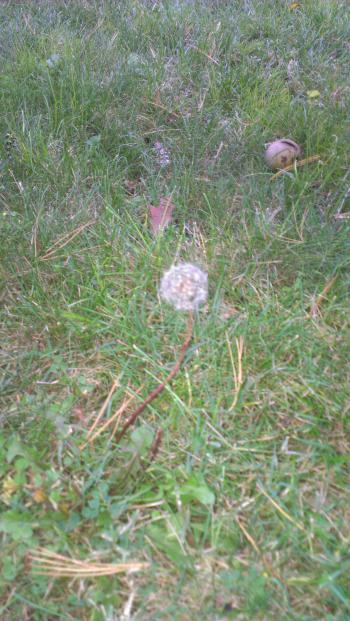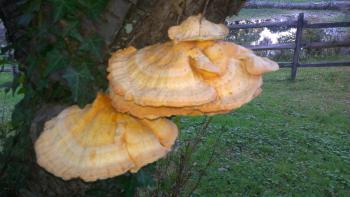Serendip is an independent site partnering with faculty at multiple colleges and universities around the world. Happy exploring!
Blogs

Research on Nonviolent Direct Action as it Intersects with Race and Class at Bryn Mawr: A Narrative
On Saturday, the Earth Quaker Action Team (EQAT) organized a Day of Action made up of 16 different actions at PNC Banks across 6 sates in the region, part of their campaign agains PNC's investments in companies that practice mountaintop removal coal mining. Bryn Mawr College had a very large role in this event, as the Bryn Mawr Earth Justice League's action was one of the largest with over 25 people attending. In our own little group (EJL) it sometimes feels like we're the only ones on campus doing this kind of activism, that Bryn Mawr as an institution, in its propoganda about fostering desire to make a meaningful contribution to the world, does not inspire in us while we are in college. We get the sense that, for the majority of the campus, academia far outweighs activism in importance, and we can put time into making the world a better place once we've graduated.
Things I didn't post
A dandelion grew on my campus site- the lawn in front of carpenter library.

A huge mushroom the the tree near the pond.

This is a picture of the sunflowers planted in stduent garden right after the storm.

Beautiful scenary at Nantasket Beach Hull MA in the morning, tourists who were drowned by the view and early communtors who ignored the scenes.

Day 24 Reflection
While I loved our visit to Ashbridge Park today, I personally did not get the watery experience that I think many were hoping for. I found the portions of the river that I saw to be upsetting- there were water bottles sitting in the grass, an Arizona Iced Tea bottle dipping up and down in the water, and other miscellaneous trash littering the banks. Constant reminders of us, humans, and the mark we insist that we leave everywhere.
The activities we did made me feel like we were very much together. Without wooden, man-made chairs holding us in our places I was able to sense the community that we have become over the course of the semester.
We chanted together, we screamed together, we learned together, we read poetry together, we ate together, we explored together, we wrote together.
I thought when we discussed the plan for this course that the neat schedule of events was too structured for what I had hoped would be a collective Thoreauvian ramble, but once we were there it didn’t seem as structured as I had anticipated. There was still some presence of structure and time constraints, and time seemed to move much more quickly than it normally does when seated.

Thoughts on everyone's papers
I’ve really enjoyed reading through everyone’s papers/projects, and while I know that for much of the class, their projects for Jody are leading into their final activism for the class, I wish that there was more of a link. In particular, I think that it would be GREAT if Chandrea and Esty’s tour (if they’re interested in this) could be incorporated into the final presentation, as a way for the larger campus community to be exposed to what we have been talking about in a very visceral, real way. I know that many McBride students have expressed feeling both very conspicuous and invisible at the same time, so I think that somehow sharing Sharaai’s paper would also mean a lot to current McBride scholars. This is also true for HSBurke’s paper on the history (and lack of historical documentation) of maids/servants at Bryn Mawr – this is not a conversation that I hear a lot of people hearing. And Owl’s paper too. I don’t know if any of you are actually interested in publicly sharing your work, but I do think that it might be a powerful way of sharing our exploration of Bryn Mawr’s “walled community” with the rest of campus.

sharing knowledge
So much has already been written on our joint ramble with the seniors that I don't have much to add. Yes, it was it was interesting to remember more about our geology session: when it came time to share it with others cerain things resurfaced that I hadn't thought about since the day. Like relating the history of Bryn Mawr College not only to the stones it's built from, and where they came from, but also to the exrtaordianry Bryn Mawr woman geologist who named them! My other favorite moment was the vine-swinging. Three seniors in a row became inspired to emulate Tarzan: the first quite cautiously, then when nothing bad happened the second and third more boldly, ending with a real swing that caused the vine to let go and slowly come snaking down! On the way to the graveyard we saw a huge chunk of (I think) tulip tree sticking into the ground, probably blown off in the hurricane? And I loved the overgrownm alive but also a bit otherwordly atmosphere of the graveyard itself.
I have to rant again just a little bit about all the talk of "invasive" species. Firstly, as I like to say, humans have a lot of damn gall calling other species invasive! And the implication of moral depravity in plants which "take over" and "destroy" other plant species seems weird to me. They're just trying to make a living like anyone else. Do we condemn them for being successful?

Silence and Poetry
It felt quiet in Ashbridge Park. It wasn’t, not really, because of the omnipresent leaf blowers and speeding motorcycles . But the sounds felt more muted, and somehow farther away than in our usual spot outside English House. I liked that our class was able to lead an entirely self-directed class. I felt like I re-learned a lesson on how to listen, and how to be still. I learned things that I forgot I knew.
I also enjoyed reading poetry while sitting outside on the sunny grass. I was especially pleased with the reactions to the poems that I had chosen. I picked Traveling Through the Dark by William Stafford (http://www.poemhunter.com/poem/traveling-through-the-dark/) because of its understated sadness. I think that the last two lines about the speaker’s only swerving were poignant, and got to the root of our relationship to nature. We can’t always relate well to it. Sometimes horrible things happen and we ignore them.
Additionally, I was happy to have found an applicable Robert Frost poem that seemed less pastoral than some of his other works.

The Japanese and Chinese Scholarship
Forewarning: this is going to be real piecemeal and not that comprehensive. Here's also Erin's post that talks a lot about two early east Asian students on campus.
As Erin points out, surprisingly enough, there is a deep-rooted history of East Asian, more specifically, Japanese, and then a short time later, Chinese students, on campus. To speak of the Japanese students first, in 1893, a Quaker woman named Mrs. Wistar Morris founded what was called the Japanese Scholarship program. I found an opening speech within the special collections archives that describes a little about the beginnings of this program:
"In 1893...Mrs. Wistar Morris...was a friend and believed in foreign missions which at that time the Quakers did not. So after speak about it in meetings for some time with not results she decided she better go herself which she did. Her husband accompanying her."

Two Asian student at early time in Bryn Mawr
As the historical background for the final project, this broadcast is aim to introduce you about two excellent Asian Students at very early times in Bryn Mawr history. Since this is not the final narrative, the broadcast might vary in some perspectives.
The purpose of our final project is to explore the Asian Identity on campus and possible reasons for the absences for their voices nowadays on campus.
I will introduce two extraordinary early Asian students at very early times in Bryn Mawr campus, one Japanese student Tsuda Umeko and one Chinese student Fung Kei Liu. When digging in the past of Asian students on Bryn Mawr campus, these two especially caught my attention due to the similarities in their stories.
Asian Students has been on this campus since the very beginning. Interaction with some representative of Asian countries, China and Japan, both went back to as early as end of 19th century. Besides the conventional admission of students from these countries and Asian Americans, Bryn Mawr‘s first connection with China, oddly enough, was a results of the anti-foreign Boxer Rebellion of 1899; The formal introduction of programs for students from China, however, didn’t happen until 1917.




